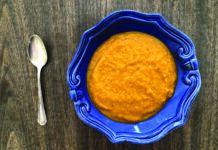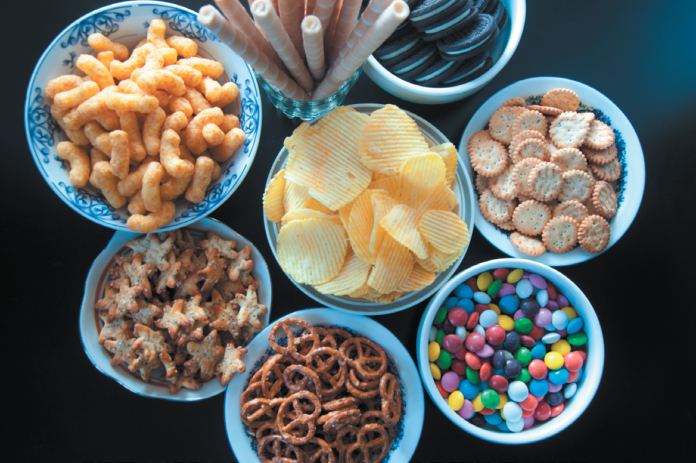Practically all foods undergo some form of processing before they are ready to eat—from simple processes like cutting and cooking to more complex processes like homogenizing, pasteurizing, fermenting, fortifying, refining, hydrolyzing, and extruding. Processing makes raw foods more palatable, minimizes spoilage, changes texture and flavor, modifies nutrient content, and creates convenience. Some processing, like freezing, pasteurization, vacuum-packing, and (non-alcoholic) fermentation have beneficial effects on health: preserving nutrients, increasing digestibility and availability of some nutrients, or preventing food-borne illness. But in other cases, processing has some negative health effects: partial hydrogenation of fat, for example, creates trans fats that have been linked to increased risk for cardiovascular disease; refining of grains reduces nutrient content and creates rapidly digested concentrated starch which increases risk for weight gain, diabetes, and other negative health effects; and addition of excess salt and sugar is tied to a whole host of illnesses, including cardiovascular disease, diabetes, hypertension, and obesity. Having a clear understanding of these health impacts and what makes a food “processed” is crucial to good dietary decision making.
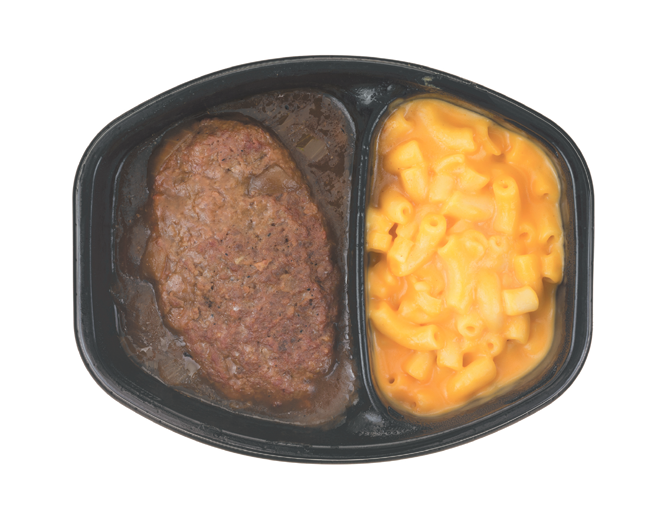
Image © BWFolsom | Getty Images
The Rise of Processed Foods: Early humans used salting, fermenting, drying, and smoking to preserve foods for the long winter months or prevent spoilage in hot temperatures and humidity. Canning, milling grains, and freezing followed as technology advanced. Other advances addressed food-borne illness, such as pasteurization to kill bacteria in raw milk or additives to inhibit the growth of mold in baked products and slow fats from becoming rancid. Enrichment and fortification with vitamins and minerals replaced nutrients lost to refining to address malnutrition. World War II gave us dehydrated juice, instant coffee, and cake mix, as the govenment looked for new ways to nourish the troops. Simple-to-prepare and ready-to-eat foods are convenient and have a long shelf life, saving time and effort and reducing food waste.
But the rise in processing methods that go beyond basic food preparation, preservation, and food safety has led to a dramatic shift in the global food supply. According to a 2015 report published by the Pan American Health Organization of the World Health Organization (WHO), dietary patterns based on meals and dishes prepared from unprocessed or minimally processed foods have been displaced by those that are increasingly based on processed food and drink products, even in middle- and low-income countries. According to the report’s authors, “the result is diets with excessive energy density, high in free sugars and unhealthy fats and salt, and low in dietary fiber that increase the risk of obesity and other diet-related non-communicable diseases.”
Defining “Processed” Foods: There is no universally agreed-upon definition or system for categorizing processed foods. One approach, the NOVA Food Classification System, was developed by scientists at the University of Sao Paulo in Brazil. NOVA was designed to help people group foods according to the extent and purpose of the processing they undergo (see Classifying Processed Foods). Foods are defined as unprocessed, minimally processed, processed, and ultra-processed, with an additional category or processed culinary ingredients. (Note that other systems may define these terms somewhat differently.)
Why it Matters: In countries around the world, increased availability of ultra-processed foods has been associated with a rise in obesity and related chronic health problems like diabetes and cardiovascular disease. Food processing often removes health-promoting nutrients such as fiber, phytochemicals, vitamins, minerals, beneficial fatty acids, and other bioactive components. Additionally, processed and ultra-processed foods tend to be high in added sugars, refined starches, and sodium, which have been shown to increase risk for cardiovascular disease, diabetes, and obesity. Such foods often also contain a mix of emulsifiers, thickeners, stabilizers, and artificial sweeteners, each of which have uncertain and controversial health effects. Processed meats (like bacon, ham, sausage, and deli meats) contain nitrites and are consistently linked to higher risk of colorectal cancer (so-called “nitrite-free” meats have nitrites added in the form of celery juice or other “natural” sources.) The refined grains and starches in processed foods are rapidly digested into glucose which is absorbed into the bloodstream more quickly and in greater quantities than natural sugars in unprocessed foods, increasing risk for weight gain, diabetes and other negative health effects. While not all unprocessed foods benefit health (think butter and unprocessed red meats, which seem relatively neutral overall), even these natural foods often have less of a negative impact on health than ultra-processed foods.
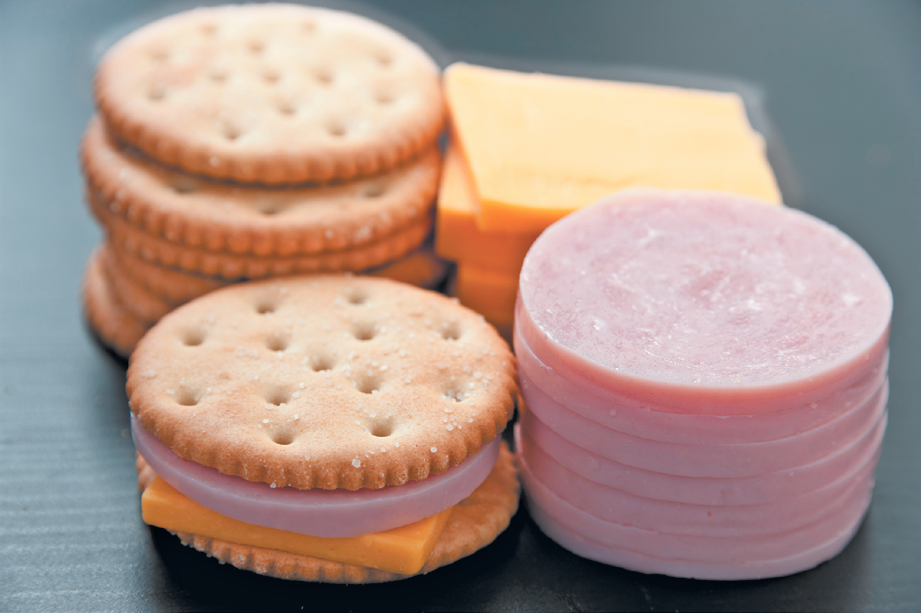
Image © Juanmonino | Getty Images
A carefully controlled trial recently published in the journal Cell Metabolism compared a diet rich in ultra-processed foods to a diet rich in unprocessed and minimally processed foods. The study, conducted at the National Institutes of Health, housed 20 adults in a testing facility and controlled the foods they were offered for one month. For 2 weeks, participants were offered either a high-processed-food diet or a low-processed-food diet. The two diets were carefully matched to be similar in offered calories, carbohydrate, fat, protein, sugar, salt, and fiber. Participants were allowed to eat as much or as little of the foods as they wanted. In the end, participants ate an average of 500 calories a day more when offered the high-processed-food meals—and gained about a pound a week. In contrast, they naturally ate fewer calories and lost about a pound a week when offered the low-processed-food meals. Notably, participants reported enjoying and feeling similarly satisfied on both diets—the differences in calorie intake and weight gain were not due to any conscious difference in how the meals were perceived. The authors concluded that limiting consumption of ultra-processed foods may be an effective strategy for obesity prevention and treatment.
In many cases, some level of processing is important for food safety and arguably essential for convenience in today’s busy world. The best approach is to focus on consuming foods that are in their natural form (such as fruits, nuts, and veggies) and to buy and prepare others yourself (such as cooked vegetables and fruit, legumes, minimally processed whole grains, and fish). Other packaged foods that contain ingredients in or near their whole form (such as whole grain breads, unsweetened yogurt, par-boiled/quick-cook whole grains, and frozen vegetables) are both healthy and convenient. Avoiding ultra-processed foods and beverages—with their refined grains, high sodium, added sugars, and lack of unprocessed ingredients—is emerging as one of the most important things you can do for your overall health.
Click image to enlarge
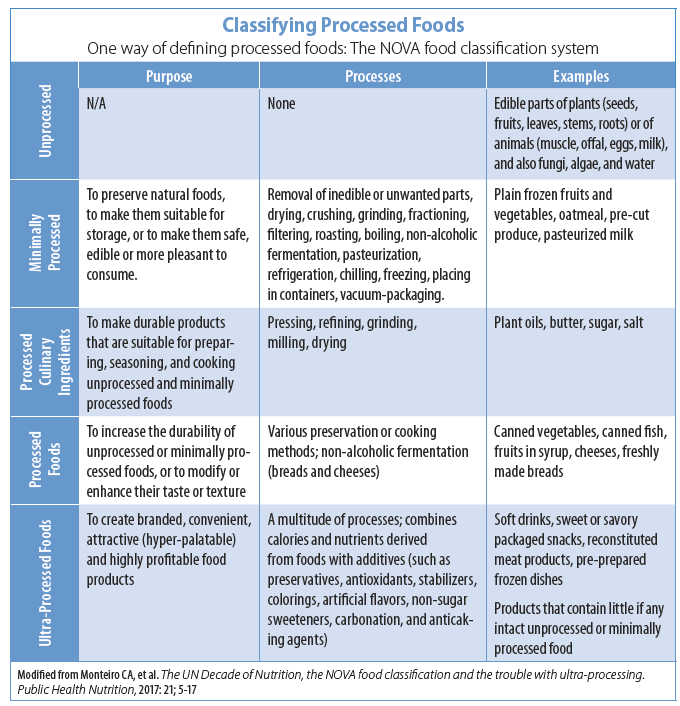
Try these tips for avoiding ultra-processed foods:
-Choose foods in their natural or minimally processed forms (such as fresh or frozen fruits and vegetables, nuts/seeds, dried or canned beans, items made with whole grains, and seafood) to make up the bulk of your diet.
-Make sure packaged/prepared foods have whole ingredients (examples include hummus, steel-cut oats, stone ground whole grain breads, and frozen vegetables without added seasonings or sauces).
-Avoid or limit refined grains (found in foods like white bread, white rice, and many cakes, cookies, breakfast cereals, pretzels, and chips).
-Avoid or limit foods with added sugar (such as sugar-sweetened beverages, baked goods, candies) and choose low or reduced sodium options (for canned goods, prepared meals, soups, and savory snacks.
-If you eat red meat, choose unprocessed meats in moderation.
-Avoid or limit processed meats such as hot dogs, bacon, sausage, and deli meats.




